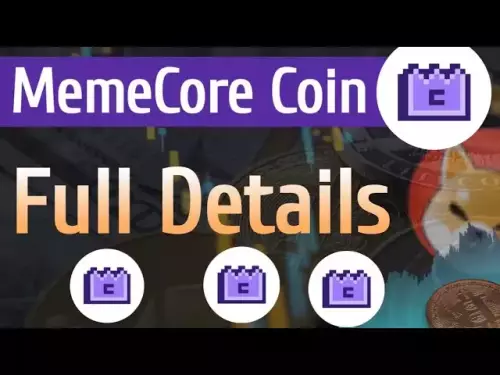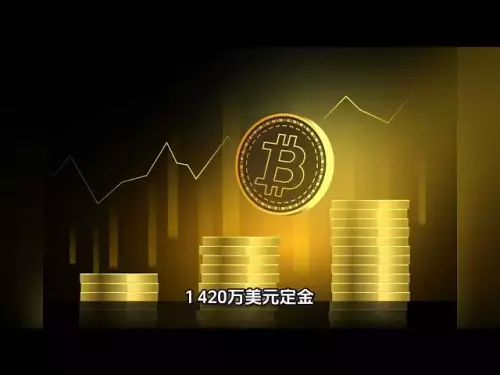-
 Bitcoin
Bitcoin $111200
0.90% -
 Ethereum
Ethereum $4291
0.34% -
 XRP
XRP $2.875
2.59% -
 Tether USDt
Tether USDt $1.000
0.01% -
 BNB
BNB $874.2
1.69% -
 Solana
Solana $204.6
1.95% -
 USDC
USDC $1.000
0.01% -
 Dogecoin
Dogecoin $0.2242
4.43% -
 TRON
TRON $0.3296
2.80% -
 Cardano
Cardano $0.8303
1.32% -
 Hyperliquid
Hyperliquid $47.06
2.49% -
 Chainlink
Chainlink $22.24
0.88% -
 Ethena USDe
Ethena USDe $1.001
0.01% -
 Sui
Sui $3.390
2.03% -
 Bitcoin Cash
Bitcoin Cash $603.7
1.59% -
 Stellar
Stellar $0.3594
1.02% -
 Avalanche
Avalanche $24.53
0.60% -
 Hedera
Hedera $0.2191
2.28% -
 UNUS SED LEO
UNUS SED LEO $9.547
-0.29% -
 Cronos
Cronos $0.2604
-2.54% -
 Litecoin
Litecoin $114.3
1.95% -
 Toncoin
Toncoin $3.099
1.18% -
 Shiba Inu
Shiba Inu $0.00001241
1.41% -
 Polkadot
Polkadot $3.979
4.42% -
 Uniswap
Uniswap $9.338
0.52% -
 World Liberty Financial
World Liberty Financial $0.2281
6.80% -
 Dai
Dai $1.000
0.00% -
 Ethena
Ethena $0.7424
1.91% -
 Monero
Monero $271.5
1.22% -
 Aave
Aave $301.2
0.96%
How to identify a short squeeze in crypto?
A short squeeze happens when rising crypto prices force leveraged short sellers to buy back assets, fueling a feedback loop of liquidations and rapid price spikes.
Sep 07, 2025 at 10:54 pm
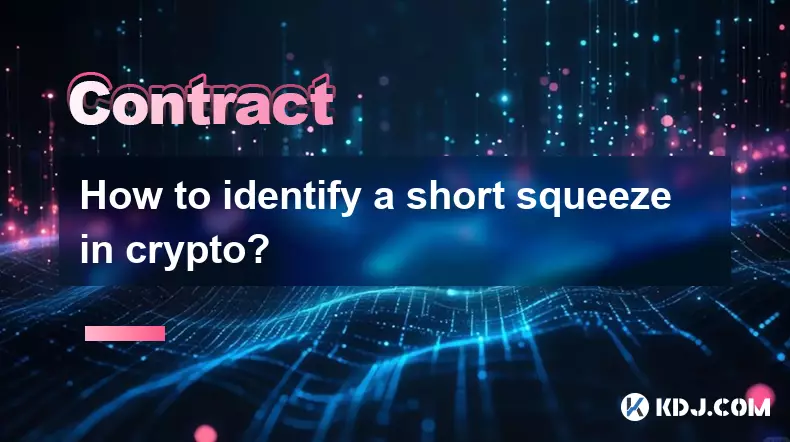
Understanding the Mechanics of a Short Squeeze
1. A short squeeze occurs when the price of a cryptocurrency rises rapidly, forcing traders who bet on a price decline to close their short positions. This buying pressure intensifies the upward movement. Short sellers typically borrow assets to sell them at current prices, hoping to buy back later at a lower cost.
2. When the market moves against them, especially in volatile crypto markets, the losses can escalate quickly. To limit further risk, short sellers must repurchase the asset, which adds upward pressure on the price. This creates a feedback loop where more buying leads to higher prices, prompting more short covering.
3. The phenomenon is more common in cryptocurrencies due to their inherent volatility, low market depth on certain exchanges, and high use of leverage in derivatives trading. These factors make the market prone to sudden and sharp price movements.
4. High open interest in perpetual futures contracts, particularly on platforms like Binance or Bybit, can amplify the effect. When a large number of leveraged short positions are concentrated at a specific price level, a breakout beyond that zone can trigger cascading liquidations.
5. Monitoring liquidation heatmaps and order book imbalances helps detect zones where short squeezes are likely. A dense cluster of short positions near a resistance level that breaks upward often signals the start of a squeeze.
Key Indicators of an Emerging Short Squeeze
1. A sudden spike in trading volume, especially accompanied by strong bullish candles, is a primary signal. This indicates aggressive buying, often from both retail and institutional players, overwhelming existing sell-side liquidity.
2. Rapid liquidation of short positions visible on derivatives data platforms like Coinglass or Hyblock confirms that bearish bets are being unwound. These platforms display real-time data on long vs. short liquidations across major cryptocurrencies.
3. Funding rates in perpetual futures contracts turning sharply positive suggest that long positions are dominant and short sellers are paying increasingly higher costs to maintain their positions, increasing their incentive to exit.
4. Price breaking through a well-established resistance level with minimal retest indicates strong momentum. If the move is sustained over several hours, it often reflects genuine shift in market sentiment rather than a brief spike.
5. Social sentiment and on-chain metrics can provide supporting evidence. A surge in mentions on platforms like Crypto Twitter or Telegram, combined with increased wallet addresses interacting with exchanges, may signal growing bullish momentum.
Behavioral Patterns Preceding a Squeeze
1. Extended periods of price consolidation with increasing open interest in short positions create the foundation for a squeeze. Traders become overconfident in a downward trend, building large bearish positions.
2. Whale wallets moving significant amounts of a cryptocurrency into exchanges shortly before a price surge can indicate preparation for coordinated buying. On-chain analytics tools like Nansen or Glassnode help track such movements.
3. Negative news or FUD (fear, uncertainty, doubt) spreading in the community often coincides with peak short positioning. This environment lulls bears into a false sense of security, setting the stage for a reversal.
4. Market depth charts showing thin order books on the sell side, especially above key resistance, suggest limited supply. A relatively small buy wall can push the price up dramatically if there are no matching sell orders.
5. High levels of put options relative to calls in crypto options markets indicate bearish sentiment. A sudden reversal under these conditions increases the likelihood of a squeeze as options traders rush to hedge or close positions.
Frequently Asked Questions
What is the difference between a short squeeze and a pump-and-dump?A short squeeze is driven by market mechanics where forced buying from liquidations amplifies price gains. A pump-and-dump is a coordinated effort by a group to inflate a price artificially and sell at the peak. The former is a structural market event; the latter is manipulative in nature.
Can stablecoins experience short squeezes?Stablecoins rarely experience short squeezes because their price is pegged and volatility is minimal. However, during extreme de-peg events, such as when USDT briefly dropped below $0.90 in 2023, temporary squeezes occurred in inverse futures contracts denominated in the stablecoin.
How do exchanges contribute to short squeezes?Exchanges with low liquidity and high leverage offerings can amplify squeezes. Fast price movements on these platforms trigger stop-losses and liquidations more rapidly. Centralized exchanges also control the visibility of order books, which can obscure true market depth.
Are short squeezes more common in altcoins than in Bitcoin?Yes, altcoins are more susceptible due to lower market capitalization, thinner order books, and higher speculative interest. Bitcoin, while not immune, requires significantly larger capital to trigger a squeeze, making such events less frequent and usually tied to macro market shifts.
Disclaimer:info@kdj.com
The information provided is not trading advice. kdj.com does not assume any responsibility for any investments made based on the information provided in this article. Cryptocurrencies are highly volatile and it is highly recommended that you invest with caution after thorough research!
If you believe that the content used on this website infringes your copyright, please contact us immediately (info@kdj.com) and we will delete it promptly.
- Dogecoin, Shiba Inu, and the 1000x Hunt: What's Next?
- 2025-09-08 04:25:16
- Arbitrum (ARB) Price Prediction: Will Bulls Conquer $0.50?
- 2025-09-08 04:45:16
- BullZilla, Presale, Meme Coin: Hottest Ticket in Crypto Town?
- 2025-09-08 04:25:16
- XRP ETF Buzz & Altcoin Action: Decoding ARB, PEPE, and the Crypto Landscape
- 2025-09-08 03:05:16
- Solana Price, Meme Coins, and Layer Brett: What's the Hype?
- 2025-09-08 02:45:11
- MAGAX Presale Stage 2: Your Last Chance for Meme-to-Earn Rewards at This Price Band
- 2025-09-08 03:16:11
Related knowledge
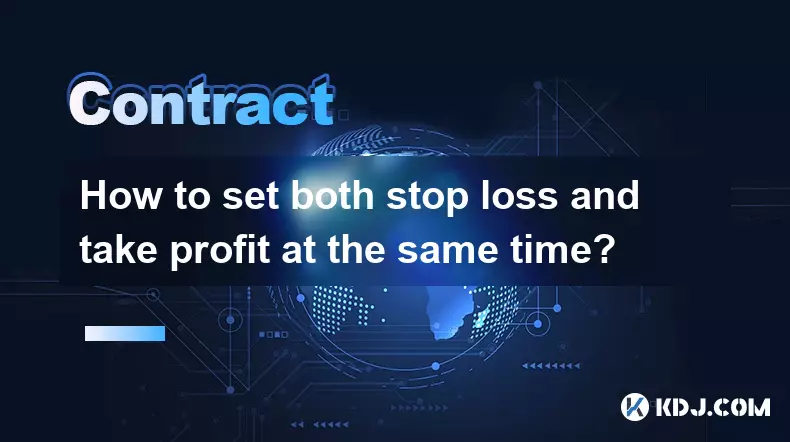
How to set both stop loss and take profit at the same time?
Sep 06,2025 at 04:36pm
Understanding Simultaneous Stop Loss and Take Profit Orders1. Placing both stop loss and take profit orders at the same time is a standard practice in...

What is copy trading for crypto futures?
Sep 07,2025 at 02:00am
What Is Copy Trading in Crypto Futures?1. Copy trading in crypto futures allows investors to automatically replicate the trades of experienced traders...
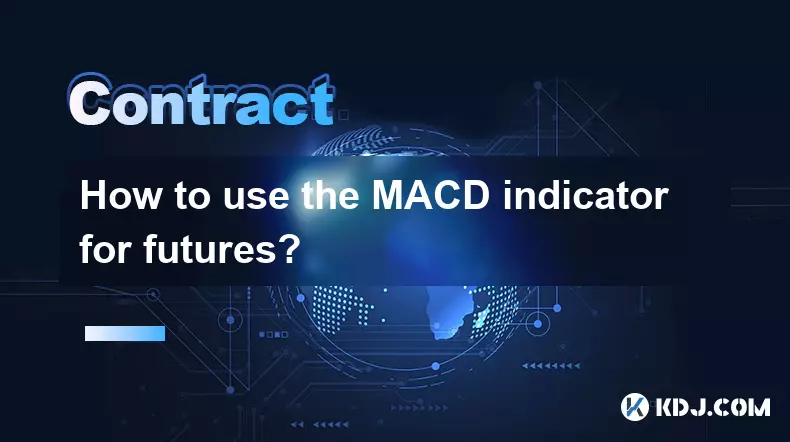
How to use the MACD indicator for futures?
Sep 07,2025 at 09:00pm
Understanding the MACD Indicator in Futures Trading1. The MACD (Moving Average Convergence Divergence) indicator is a momentum oscillator widely used ...

What to do if you are about to be liquidated?
Sep 06,2025 at 01:00am
Understanding Liquidation in the Crypto Market1. Liquidation occurs when a trader’s margin balance falls below the required maintenance margin, forcin...
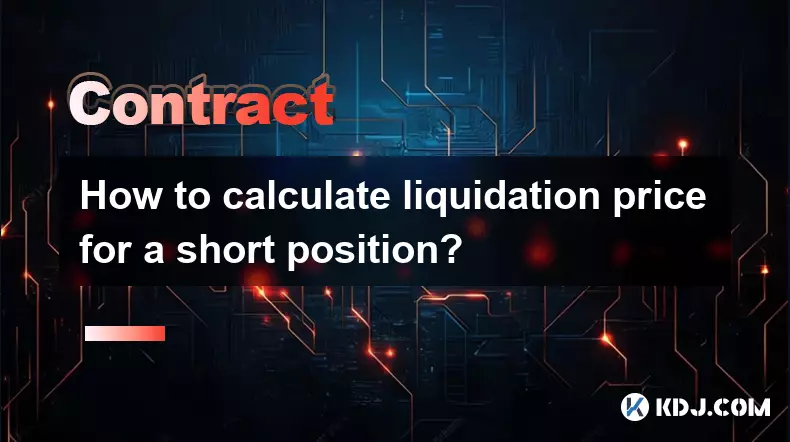
How to calculate liquidation price for a short position?
Sep 08,2025 at 03:54am
Understanding the Basics of Short Position Liquidation1. A short position in the cryptocurrency market involves borrowing an asset and selling it imme...

What is an insurance fund on crypto exchanges?
Sep 06,2025 at 03:36pm
Understanding the Role of Decentralized Exchanges in Modern Cryptocurrency Trading1. Decentralized exchanges (DEXs) have emerged as a cornerstone of t...

How to set both stop loss and take profit at the same time?
Sep 06,2025 at 04:36pm
Understanding Simultaneous Stop Loss and Take Profit Orders1. Placing both stop loss and take profit orders at the same time is a standard practice in...

What is copy trading for crypto futures?
Sep 07,2025 at 02:00am
What Is Copy Trading in Crypto Futures?1. Copy trading in crypto futures allows investors to automatically replicate the trades of experienced traders...

How to use the MACD indicator for futures?
Sep 07,2025 at 09:00pm
Understanding the MACD Indicator in Futures Trading1. The MACD (Moving Average Convergence Divergence) indicator is a momentum oscillator widely used ...

What to do if you are about to be liquidated?
Sep 06,2025 at 01:00am
Understanding Liquidation in the Crypto Market1. Liquidation occurs when a trader’s margin balance falls below the required maintenance margin, forcin...

How to calculate liquidation price for a short position?
Sep 08,2025 at 03:54am
Understanding the Basics of Short Position Liquidation1. A short position in the cryptocurrency market involves borrowing an asset and selling it imme...

What is an insurance fund on crypto exchanges?
Sep 06,2025 at 03:36pm
Understanding the Role of Decentralized Exchanges in Modern Cryptocurrency Trading1. Decentralized exchanges (DEXs) have emerged as a cornerstone of t...
See all articles





















